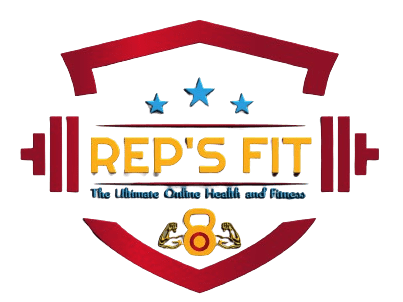How to modify any program to improve your body fitness.

Why Fitness Is Important ?
-
1. Identify Your Specific Goals
- Before modifying your routine, clarify what you want to achieve: strength, endurance, weight loss, flexibility, or balance. Your modifications should align with these goals.
2. Increase Intensity Gradually
- Strength Training: Gradually increase weights, reps, or sets. Use progressive overload by adding 5–10% more weight or adding a set.
- Cardio: Increase the pace, incline, or duration to challenge your cardiovascular system further.
- HIIT (High-Intensity Interval Training): For endurance, add more intervals or reduce the rest time between intervals to boost intensity.
3. Focus on Compound Movements
- Compound exercises (e.g., squats, deadlifts, lunges) work multiple muscle groups at once, maximizing calorie burn and promoting muscle growth. Incorporate these movements to enhance strength and improve body functionality.
4. Vary Your Workouts with Cross-Training
- Cross-training can prevent burnout and injuries while improving different aspects of fitness. For example, combine weightlifting with swimming, yoga, or cycling. This variety challenges different muscle groups and keeps workouts engaging.
5. Add Functional Movements
- Functional training includes movements that mimic daily activities, such as twisting, bending, or lifting. Exercises like kettlebell swings, medicine ball throws, and bodyweight exercises help improve mobility, stability, and body coordination.
6. Incorporate Flexibility and Mobility Work
- Flexibility training (stretching, yoga) can improve range of motion and reduce the risk of injuries. Add 10–15 minutes of stretching or mobility exercises after each workout to keep muscles loose and prevent stiffness.
7. Use Progressive Overload Techniques
- To see continuous progress, gradually increase the demands on your muscles. Try different overload techniques, like:
- Supersets: Perform two exercises back-to-back with no rest in between (e.g., bench press followed by push-ups).
- Drop Sets: Start with heavy weights, then decrease the weight after each set until muscles reach fatigue.
- Tempo Training: Slow down the movement to increase time under tension. For example, take 3 seconds to lower in a squat and 1 second to rise.
8. Track Your Progress and Adjust Accordingly
- Keep a record of your workouts, weights used, reps, and sets. Tracking allows you to see improvements, identify plateaus, and adjust your program as needed.
9. Mix Up Your Cardio
- If your goal is cardiovascular endurance or weight loss, switch up your cardio routine every few weeks. Instead of only running, try cycling, swimming, or rowing to keep your body challenged.
10. Add Recovery Days and Active Rest
- Recovery is crucial for progress. Incorporate at least one or two rest days per week to allow muscles to repair and grow. Use active rest days for light activities, like stretching, walking, or yoga.
11. Monitor Nutrition and Hydration
- Adjusting your nutrition based on your fitness goals can optimize results. For muscle growth, increase protein intake; for weight loss, focus on a balanced calorie deficit. Stay hydrated to maintain energy and support recovery.
12. Seek Guidance if Needed
- Consult a certified trainer to help design or modify your program based on specific needs, especially if you have a particular fitness goal or health concerns.
Modifying a fitness program can be an effective way to target specific fitness goals, overcome plateaus, and make workouts more engaging. Whether your goal is to build muscle, increase endurance, lose weight, or improve flexibility, here are some strategies to optimize your current fitness program:

Why Fitness Is Important ?
-
1. Identify Your Specific Goals
- Before modifying your routine, clarify what you want to achieve: strength, endurance, weight loss, flexibility, or balance. Your modifications should align with these goals.
2. Increase Intensity Gradually
- Strength Training: Gradually increase weights, reps, or sets. Use progressive overload by adding 5–10% more weight or adding a set.
- Cardio: Increase the pace, incline, or duration to challenge your cardiovascular system further.
- HIIT (High-Intensity Interval Training): For endurance, add more intervals or reduce the rest time between intervals to boost intensity.
3. Focus on Compound Movements
- Compound exercises (e.g., squats, deadlifts, lunges) work multiple muscle groups at once, maximizing calorie burn and promoting muscle growth. Incorporate these movements to enhance strength and improve body functionality.
4. Vary Your Workouts with Cross-Training
- Cross-training can prevent burnout and injuries while improving different aspects of fitness. For example, combine weightlifting with swimming, yoga, or cycling. This variety challenges different muscle groups and keeps workouts engaging.
5. Add Functional Movements
- Functional training includes movements that mimic daily activities, such as twisting, bending, or lifting. Exercises like kettlebell swings, medicine ball throws, and bodyweight exercises help improve mobility, stability, and body coordination.
6. Incorporate Flexibility and Mobility Work
- Flexibility training (stretching, yoga) can improve range of motion and reduce the risk of injuries. Add 10–15 minutes of stretching or mobility exercises after each workout to keep muscles loose and prevent stiffness.
7. Use Progressive Overload Techniques
- To see continuous progress, gradually increase the demands on your muscles. Try different overload techniques, like:
- Supersets: Perform two exercises back-to-back with no rest in between (e.g., bench press followed by push-ups).
- Drop Sets: Start with heavy weights, then decrease the weight after each set until muscles reach fatigue.
- Tempo Training: Slow down the movement to increase time under tension. For example, take 3 seconds to lower in a squat and 1 second to rise.
8. Track Your Progress and Adjust Accordingly
- Keep a record of your workouts, weights used, reps, and sets. Tracking allows you to see improvements, identify plateaus, and adjust your program as needed.
9. Mix Up Your Cardio
- If your goal is cardiovascular endurance or weight loss, switch up your cardio routine every few weeks. Instead of only running, try cycling, swimming, or rowing to keep your body challenged.
10. Add Recovery Days and Active Rest
- Recovery is crucial for progress. Incorporate at least one or two rest days per week to allow muscles to repair and grow. Use active rest days for light activities, like stretching, walking, or yoga.
11. Monitor Nutrition and Hydration
- Adjusting your nutrition based on your fitness goals can optimize results. For muscle growth, increase protein intake; for weight loss, focus on a balanced calorie deficit. Stay hydrated to maintain energy and support recovery.
12. Seek Guidance if Needed
- Consult a certified trainer to help design or modify your program based on specific needs, especially if you have a particular fitness goal or health concerns.
![]()





0 Comments
The Common category includes then following block: Paragraph, image, heading, latest gallery, quote, audio, cover, video. The paragraphs block is the default block type. This is should not have any alignment of any kind. Category and then there are many things to following blocks and many more.
The Common category includes then following block: Paragraph, image, heading, latest gallery, quote, audio, cover, video. The paragraphs block is the default block type. This is should not have any alignment of any kind.
The Common category includes then following block: Paragraph, image, heading, latest gallery, quote, audio, cover, video. The paragraphs block is the default block type. This is should not have any alignment of any kind. Category and then there are many things too following blocks and many more.